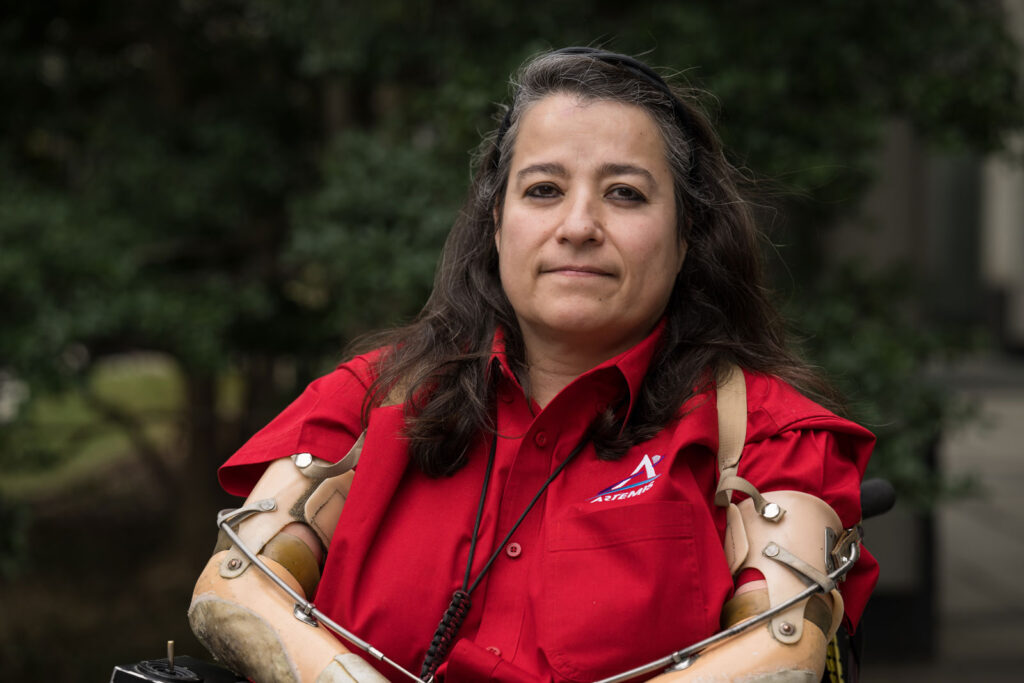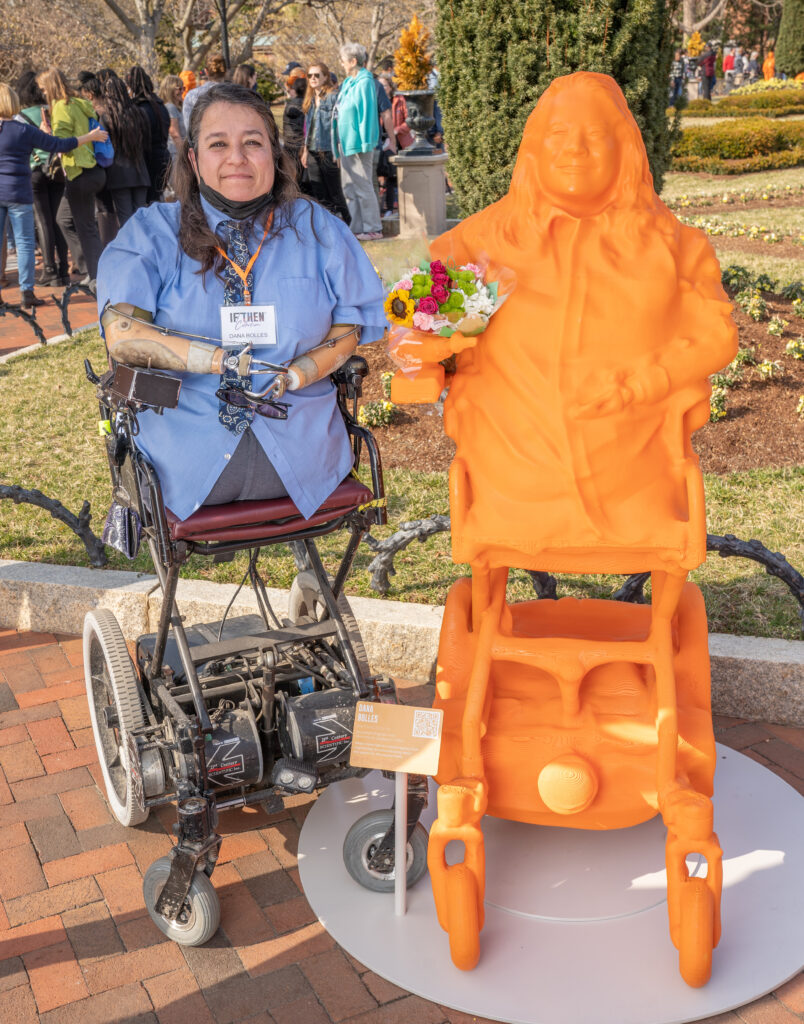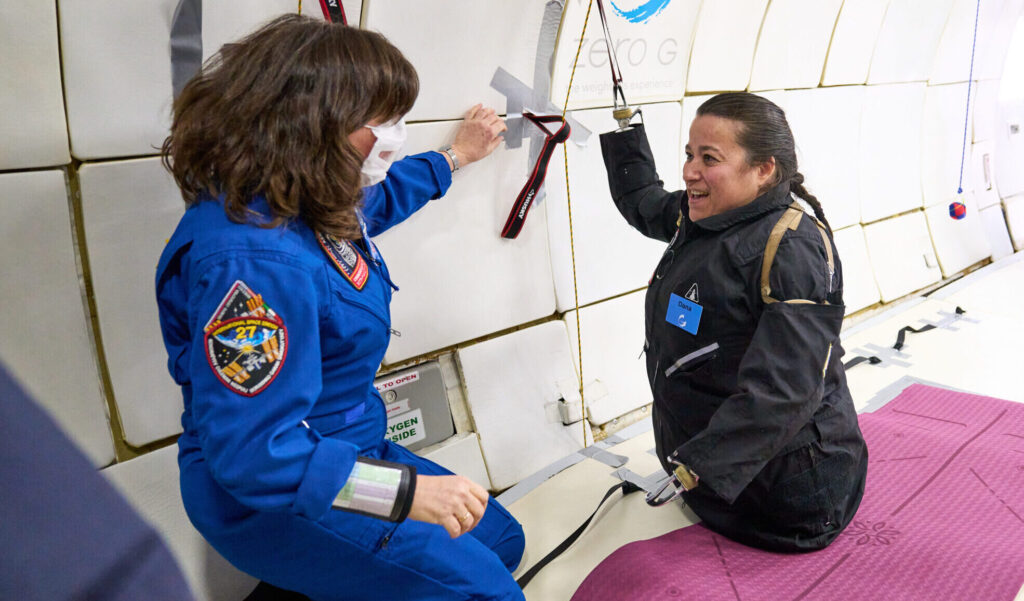In the United States, March is Women’s History Month. It`s good opportunity for public and government organizations to mention women who make a significant contribution to the development of modern society. The aerospace sphere is no exception. During the entire existence of the industry, 72 female astronauts have been in orbit, 44 of them worked as crew members on the International Space Station. And these are only those who actually flew into outer space. In fact, women have made much more to master and study the universe. Of all the many personalities, we were particularly impressed by Dana Bolles, NASA’s leading information technology specialist. We want to share with you her inspiring story, thoughts and attitude towards life.

There were many times along my path to NASA when having that dream job seemed unreachable, but with hard work and determination, I achieved my goal…to work for America’s space agency.
— Dana Bolles
Education and career
Dana is a person with a disability. She was born in times when the US government did not guarantee equal access to education for such people, but this did not prevent her from graduating from university and finding her place in life. Step by step, she stubbornly overcame difficulties, did not give up and aspired for more.
Bolles became the first student in her district to transfer from a school for children with disabilities to general education classes with students without disabilities. After school, she attended college at the University of California, Santa Cruz. In 1993, she earned a bachelor’s degree in mechanical engineering from California State University and a master’s degree in rehabilitation engineering and technology from San Francisco State University. Dana recalls that in the 90s, when she received an engineering education, there were not many girls studying these specialties. It was a surprisingly strange feeling to be one of the few women who passed the selection and became a student.
Dana Bolles began her career at NASA in 1995. For the first 13 years, she was a regulatory and environmental compliance engineer. She worked at three centers: the Kennedy Space Center, the Goddard Space Flight Center and the Ames Research Center. Today, Dana manages the External Information Technology Division at NASA Headquarters and promotes science on the NASA Science website.

Bolles is currently an IF/THEN ambassador for the American Association for the Advancement of Science (AAAS), whose main goal is to encourage schoolgirls to study the science. 125 participants from various fields of STEM (Science, Technology, Engineering, and Mathematics) joined this program. They are role models for high school girls. In this way, women working in tech fields—like Dana—show young people the different career paths they can take, as well as how STEM impacts their daily lives. After all, according to Dana, the most common stereotype about sciences is that boys are better at it than girls. Society does not encourage girls to master technological specialties, and as a result, they drop out.
Why STEM and space
Dana became interested in space at a very early age. She recalls that in 1975, when a teacher at school asked the children: “What do you want to be?”, she answered: “An astronaut.” The girl thought it would be incredibly interesting to work in weightlessness, where she could move without a wheelchair. Even more, the fact that she has no arms and legs is her advantage. After all, in the small space of the ship, where the crew feels like sardines in a jar, she would take up much less space than others. In addition, astronauts work with robotic arms, and who is better fit to that task than a person who has been using them since the age of two?
Some people keep their first pair of baby shoes, and I still have my first pair of baby arms. They are really cute.
— Dana Bolles
Dana Bolles’ interest in engineering grew out of her own disability: she became fascinated with the mechanics of her prostheses and the wheelchair she has been using since she was three. It was technological innovations that allow people with disabilities to adapt to everyday life that inspired her to major in mechanical engineering.
AstroAccess mission

The biggest problem, according to Dana, is stereotypes about people with disabilities. She says that usually at the first meeting, people immediately make assumptions about what she can or cannot do. They seem to put her in a restrictive box, thinking that she is not capable of more. Bolles has to constantly discard these prejudices, and it’s a little boring.
Dana advises not to hastily label people like her. People with disabilities often cannot do many simple household things in the usual ways. It teaches them to think outside the box. They are good planners because it makes their lives easier. Therefore, people with disabilities have many advantages that others may not have.
Today, Dana Bolles actively advocates for people with disabilities in STEM. In 2021, she took part in the AstroAccess mission, which aims to attract such people to space exploration. A total of 12 people were selected who flew in a special plane to experience weightlessness at an altitude of 10 km above the Earth. The goal of the project is not only to draw attention to the problems of people with disabilities, but also to check how suitable existing spacesuits and spaceships are for them to participate in space exploration.
Information: What is Women’s History Month?
Since 1987, Women’s History Month has been celebrated in the USA every year in March. The main goal of this event is to emphasize the contribution of women to the culture, history and development of modern society. Women’s History Month is also popular in Great Britain and Canada. Australia first celebrated it in 2000. In Ukraine, the Center for Gender Culture, located in Kharkiv, takes care of supporting femininity and preserving the memory of the role of women in history.

